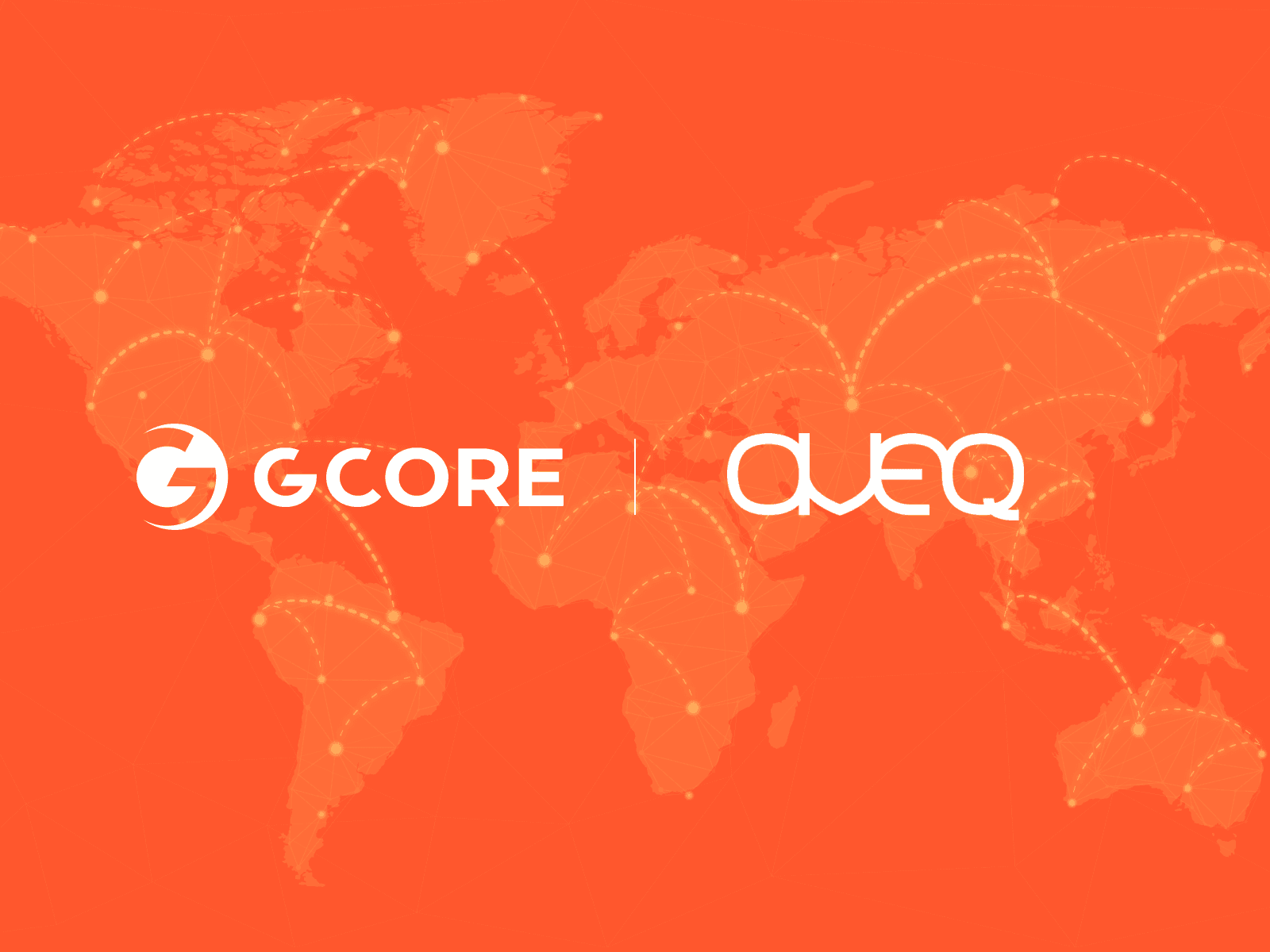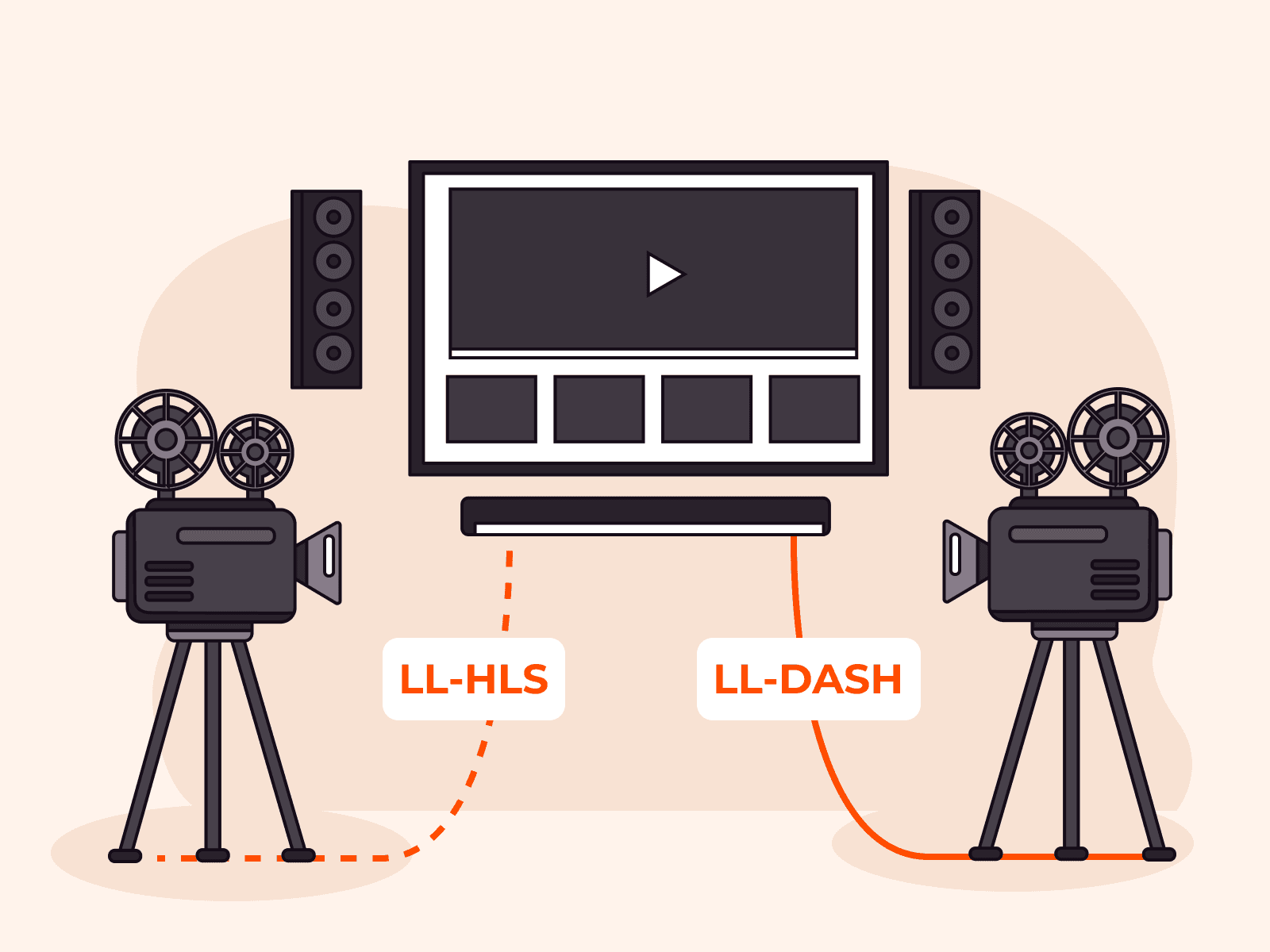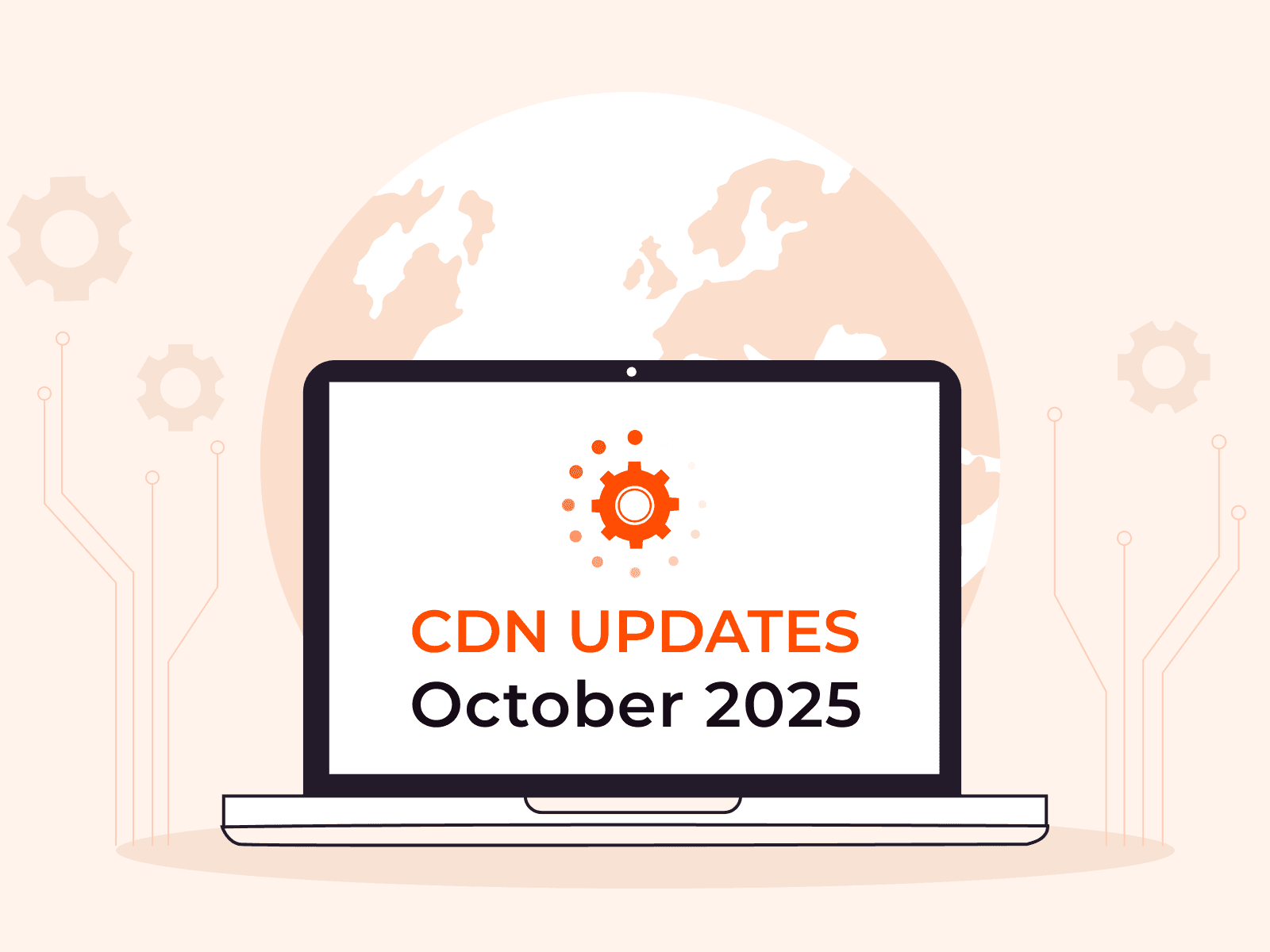How do e-commerce and online shops benefit from using a modern CDN?
- February 7, 2023
- 7 min read

Competition in the e-commerce industry is growing rapidly. To run an online business successfully, you need to be sure that your online platform is fast, stable, and responsive for every user around the globe. Because even a small disruption in service could cost you not only profit but lead to a loss of loyalty and long-term reputational damage.
This is a big challenge for your infrastructure team, and one they’ll need to oversee daily. Your engineers must design and maintain a massive bunch of on-premise or cloud services stitched together for a single purpose—efficient operation of the e-commerce platform.
In this article, we’ll reveal what a modern CDN is, the important part it plays in an e-commerce platform, and how you could benefit from using this cloud service.
What is a CDN?
How, exactly, does a CDN accelerate websites?
Additional advantages CDNs bring to the e-commerce industry
Measurable benefits for online stores and marketplaces
CDN as a cloud service
How to choose the best CDN for e-commerce
What is a CDN?
A content delivery network or CDN is a distributed network of caching servers dedicated to storing a copy of your website closer to your audience of end users.
The conventional understanding of a CDN’s purpose is accelerating websites and web applications by delivering cached static content via geographically dispersed server locations. It means every time your user from Boston sends requests to the website hosted in Berlin, the answer will be delivered from the closest point—for example, a server located in New York.
A CDN works as a proxy between your web server and clients—your user connections are terminated at geographically distributed edge (in relation to the network) servers, and only then, if needed, could they reach the origin server.
Read more detailed information about CDN
How, exactly, does a CDN accelerate websites?
Let’s dig a bit deeper into how it works.
The web page loading speed is determined by how quickly the web server can receive the client’s request, process it, and deliver the answer. It depends on web server configuration, website code, third-party scripts, and many other factors. There are many things to optimize on the client and server side, but if you operate globally, one of the most important challenges for you is the distance.
Since every website consists of many different files (like HTML, CSS, JS, and JPG), the webpage loading involves multiple request-answer trips between your browser and the web server, which should travel all the distance between their locations.

Figure 1. How a CDN accelerates static content delivery
Decreasing this distance evidently reduces the overall time needed for page rendering. So, with a properly-configured CDN service, your users will reach your website as if the web hosting is always located in the same region of the globe as they are.
Today, web acceleration is becoming even more tricky. Cloud-native applications with microservice architecture, deeply personalized customer feeds, constant split testing, and many other things that rely on dynamic content delivery are making things more complex. This is the reason why some CDNs are transforming into edge optimization platforms with dynamic content acceleration (DCA) capabilities.
Additional advantages CDNs bring to the e-commerce industry
E-commerce today is not just about having a website and optimization; it’s much more. Running an online store, managing a marketplace, or hosting a classified ads service, you need to make sure that your audience can entrust you with their sensitive data like payment details and user credentials.
Here are some functions beyond web acceleration modern CDNs need to accomplish to meet the demands of the e-commerce industry.
Ensure uptime and minimum service disruption
Aside from web acceleration, a CDN also protects the web server from being overwhelmed during significant spikes in web traffic or during distributed denial of service (DDoS) attacks. Otherwise, these events could cause significant problems like server slowdowns or even crashes.
The ability to handle traffic spikes is very helpful for online retailers during seasonal sales or desirable promo events.

Figure 2. The previously announced PS5 online sale caused a 30% burst in traffic for the online retailer.
Preventing outages due to large-scale DDoS attacks is an inherent feature of many CDN with high global network capacity. It could protect your web service from disruptions and prevent all related profit loss from occurring.
Deliver lightweight product images with ease
Flawless product images are crucial for any e-commerce project, no matter if you are running a small clothing store or a large nationwide retailer. Your buyers should be able to zoom in and inspect every detail of the goods you’re offering. And be able to do so without compromising website responsiveness at the same time.
To achieve this balance between hi-res pictures and their loading speed, you need to perform a very subtle code configuration as well as use efficient image compression and delivery techniques.
That’s where image optimization on CDN (sometimes called “Image CDN”) comes into play.

Figure 3. Image cropping with image optimization on CDN
This image optimization functionality allows you to:
- Significantly reduce image size by applying compression or converting original images into more optimized formats like WebP or AVIF;
- Eliminate all pre-uploading routines for your team regarding editing, resizing, and quality optimization, freeing up precious designer resources;
- Become more agile and flexible with planning and implementing website changes and testing because you’ll be able to apply bulk changes with a simple URL query string.
Read more about image optimization use cases
Instant playback of e-commerce video
Brand videos, product explainers, how-to videos, product look-ups, catwalk clips for clothing previews, and customer video reviews—all these use cases are very important for commercial efficiency in today’s video internet era.
of internet users look for a video related to a product before visiting a store
Source: thinkwithgoogle.com
Online shops should be able to host tons of video assets and stream them efficiently via the internet with zero delays. Employing a CDN is the only way to make it possible on a global scale.
Optimized for video-on-demand (VOD) delivery, a CDN service can minimize the time-to-first-byte metrics and provide your audience with the best possible user experience.
Secured operations and payment processing
The e-commerce industry is inherently connected with user credentials, personal data, and payment processing. Regardless of the architecture of your service, you need to treat all kinds of sensitive data very carefully, factoring in all possible security options. Because you don’t get repeated chances to fail and stay valid or considered legitimate in this field.
Modern CDNs work as a full-fledged edge optimization platform designed to create a secure environment for your clients and customers.
With SSL/TLS encryption, you will have the risk-free transactions you need to ensure customer loyalty. A Web Application Firewall (WAF) tool helps prevent unauthorized access and removes vulnerabilities at the application layer.
Measurable benefits for online stores and marketplaces
As we’ve discovered, a CDN could make your web service more reliable, fast, and secure. Which leads us to the following question: what exact benefits could it deliver to your business?
The main benefit your online business could obtain from having a well-optimized website is an improved user experience. It will appropriately affect overall customer satisfaction and long-term loyalty. But all these benefits are hard to assess, so let’s break them down into smaller, more measurable metrics we should keep an eye on.
Decreased bounce rate and longer session duration
Bounce rate and average session duration are the two main metrics of your website (usually tracked in Google Analytics) that are used to show the quality of user behavior.
And both of them are very sensitive to page speed improvements:
- 20% reduction in page load time leads to 9% decrease in bounce rate (Source: thinkwithgoogle.com)
- 55% page load time improvement (LCP metric) delivers 23% better session duration (Source: web.dev)
Improved conversion rate
As well as behavior metrics, the website conversion rate could also be impacted by changes in website speed. Since this parameter is very comprehensive, it’s difficult to distill the only reason for its improvement. That being said, in many cases, we can see how it correlates with the time of page loading.
- A 0.1-second page load time improvement increases mobile conversion rate by 8-10% (Source: thinkwithgoogle.com)
Increased revenue per session
Sometimes, large e-commerce platforms conduct research on how web performance optimization could increase their revenue per user session. For example, here’s how much online fashion brand Zalando improved their stats:
- 0.7% increased revenue per session with a 100ms page load time improvement (Source: web.dev)
Higher search ranking and better SEO
Search engine optimization (SEO) efforts may seem very unclear when looking in from the outside, but they entail specific and measurable parameters you can monitor with tools like Google Search Console or SEMrush. All things being equal, increasing the webpage loading speed will affect its search ranking results.
- A 40% improvement in LCP led to 28% more organic traffic (Source: web.dev)
- Top-ranked websites have faster site speeds for page load time-to-first-byte (Source: neilpatel.com)
Free Whitepaper!
The CDN impact on SEO: how speeding up your website can promote your business online.
CDN as a cloud service
One more measurable benefit, which we didn’t mention in the list above, is your company’s decreasing amount of required investment and total costs of ownership (TCO). With a CDN, your business won’t need to buy and maintain expensive on-premise appliances needed for DDoS mitigation and correlated bandwidth issues.
This benefit originates from the cloud nature of the CDN service. It means you don’t need to own a large-scale infrastructure with complicated software and thousands of server nodes in dozens of locations worldwide.
You could just easily hire the service when needed and pay as you go.
It gives you greater scalability benefits to increase the agility and flexibility of your product growth and go-to-market strategy.
How to choose the best CDN for e-commerce
Here is a brief checklist that will help you navigate through the main points of acquiring a CDN service.
1. Price and coverage
The price and coverage (read: performance) are the most popular things people ask at first. Both of them could significantly vary from region to region depending on the number of locations, network connectivity, and existing internet conditions.
In this question, your decision should be determined by your knowledge of your audience and the market strategy. As an option, you could choose a multi-CDN strategy with many CDN providers at once.
2. Anti-DDoS and security
At the second step, check the DDoS mitigation capabilities and the list of security options. Modern CDN providers should have built-in security mechanisms like WAF, traffic filtering, bot management, SSL/TLS encryption, etc.
It all depends on your existing security strategy, but it could be a good all-in-one option in some cases.
3. Content optimization and delivery
As mentioned above, e-commerce web platforms strongly depend on static asset delivery, so ask about Brotli/Gzip compression for files and fonts, WebP/AVIF conversion for images, and abilities to crop/resize and change image quality.
All these features should be performed on-the-fly, without affecting your web server configuration and file directories.
4. Dynamic content acceleration
A new age brings with it new challenges. A cloud-native environment with intensive service-to-service communication and deeply personalized user experience demands the acceleration of dynamically generated assets and API calls. For many CDNs, it is a real challenge, because the dynamic content cannot be cached conventionally.
So check the capabilities of your CDN provider on accelerating dynamic content and how they could be adapted for your existing needs.
Gcore CDN is a next-gen content delivery network optimized for dynamic content delivery, video streaming, and image processing. It runs over the global edge infrastructure with more than 140 locations worldwide.
Related articles
Subscribe to our newsletter
Get the latest industry trends, exclusive insights, and Gcore updates delivered straight to your inbox.






